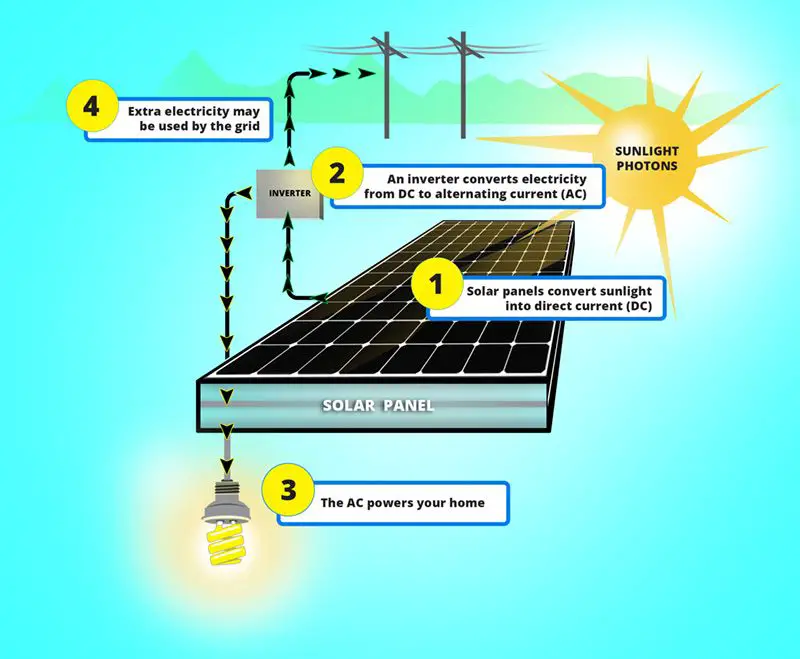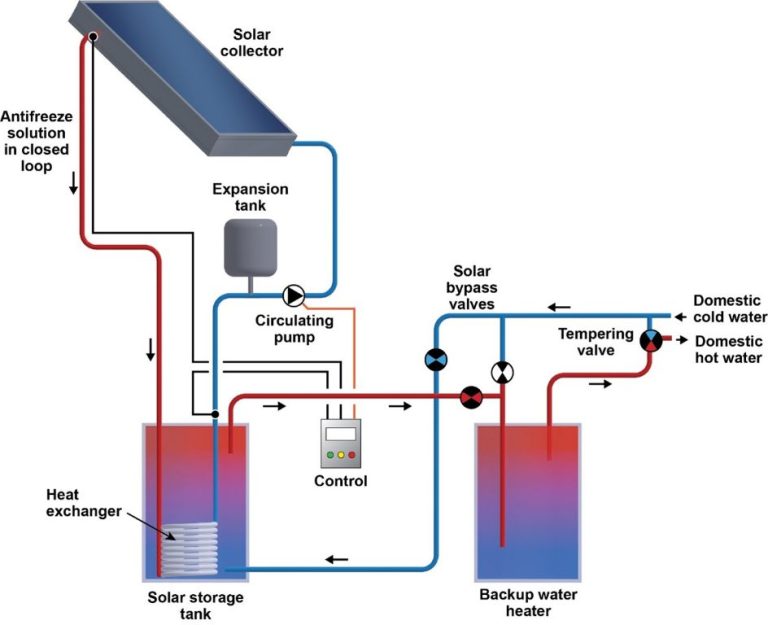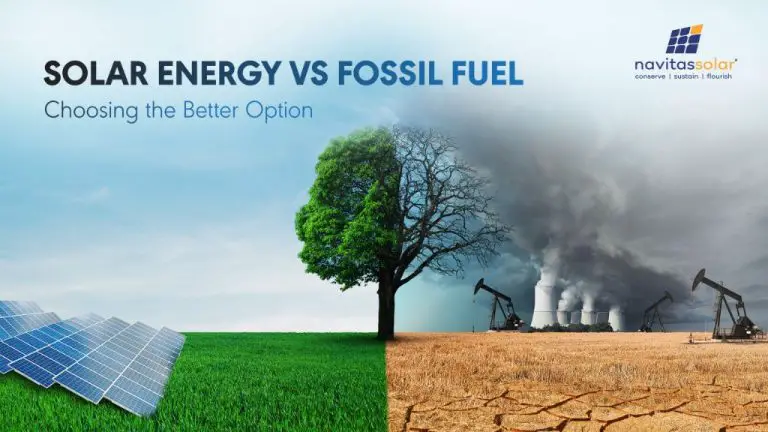How Do Solar Panels Provide Renewable Energy?
Solar panels are devices that convert sunlight into electricity. They are a key technology in renewable energy – energy from sources that are naturally replenished like sunlight, wind, rain, and geothermal heat. Unlike fossil fuels, renewable energy sources regenerate and are unlimited. Using renewable energy instead of fossil fuels can significantly reduce greenhouse gas emissions and air pollution. Understanding how solar panels work and their benefits is key as the world transitions to cleaner energy.
How Solar Panels Work
Solar panels work through the photovoltaic effect, which is a process that converts sunlight into electricity. When sunlight hits the solar cells inside a panel, it knocks electrons loose from the atoms in the semiconductor material. The freed electrons flow through the panel as direct current electricity.
The key components of a solar panel that enable this photovoltaic process are the solar cells, protective glass covering, aluminum framing, and junction box. The solar cells are made of silicon and arranged in grids on the panel. Hundreds or thousands of solar cells are embedded in a single panel. The glass covering protects the delicate silicon cells from weather and impact damage. The aluminum framing provides structural support and rigidity. The junction box allows a connection to the electrical system.
When sunlight strikes the solar cells, clusters of solar cells convert the energy into usable DC electricity. This electricity flows through connecting wires to an inverter, which converts the DC into alternating current (AC) used for powering home devices. The electrical system is usually connected to the utility grid through a net meter. Any excess electricity can flow back into the grid in a process called net metering.
Types of Solar Panels
There are three main types of solar panels used in residential and commercial installations: monocrystalline, polycrystalline, and thin-film. The main differences between the panel types come down to efficiency, price, and aesthetics.
Monocrystalline solar panels are made from silicon ingots, which are cylindrical blocks formed by melting and crystallizing pure silicon. The silicon atoms are aligned perfectly in a continuous crystal lattice structure, giving monocrystalline panels their characteristic look with visible diamond-shaped silicon cells. Monocrystalline panels have the highest efficiency rates, usually around 15-20%, but are more expensive than polycrystalline panels.
Polycrystalline solar panels are made from fragments of silicon crystals melted together. The silicon atoms align randomly, forming small crystal fragments rather than a continuous lattice. This gives polycrystalline panels a speckled blue appearance. Polycrystalline efficiency ranges from 13-16% on average, making these panels a less expensive but lower efficiency option compared to monocrystalline.
Thin-film solar panels use a layer of light-absorbing material like silicon, cadmium telluride, or copper indium gallium selenide, deposited in thin layers on a substrate like glass or plastic. Because less active material is needed, thin-film panels are lightweight and have a flexible surface. However, thin-film technology has lower efficiency rates around 7-13%. But costs are also lower, making thin-film a potential option for large installations where space is abundant.
Efficiency and Output
The efficiency of a solar panel determines how much of the sun’s energy striking the panel is converted into usable electricity. There are several factors that impact solar panel efficiency:
- Solar cell material – Monocrystalline silicon cells are the most efficient at 15-20%, polycrystalline silicon is slightly less at 13-16%, and thin-film is the least efficient at 7-13%.
- Temperature – Solar panels become less efficient as temperature increases. Cooler weather leads to higher efficiency.
- Shading – Even small amounts of shading from trees, chimneys, or dirt can greatly reduce efficiency.
- Angle and orientation – Solar panels are most efficient when pointed directly at sunlight. Efficiency declines at oblique angles.
- Age – Solar panel efficiency may decrease slightly over time, typically at a rate of 0.5-1% per year.
In optimal conditions, a typical residential solar panel system generates around 15 watts per square foot. So, a 5 kilowatt system covering 333 square feet would produce around 5,000 watts (5 kilowatts) at peak sunshine. This would generate about 6,000-6,500 kilowatt hours (kWh) per year in sunnier climates and around 4,000-4,500 kWh in less sunny climates. Enough to cover 50%-80% of an average household’s electricity needs.
Installation

Installing solar panels on your home or business requires careful planning and permitting. The most common mounting options are roof mounts, ground mounts or pole mounts.
For roof mounts, solar panels are attached to your roof using racking systems. This is the most popular option for residential solar. The roof should have proper south-facing orientation and tilted at an ideal angle, usually 30-40 degrees depending on location. Proper roof orientation and tilt angle maximize solar production.
Ground mount systems attach solar panels to the ground using racking anchored in concrete footings. This allows orienting panels to optimal direction and tilt. Ground mounts work well when roof space is limited or shading issues exist. Pole mounting attaches solar panels to poles embedded in the ground or attached to concrete footings.
Most areas require permits for solar installations to meet electrical and building codes. Permits are typically obtained from local county or city building departments. Installers handle permitting process but homeowners should verify. Any rebates or incentives may also require compliant permits.
Costs
The cost of solar panels has dropped dramatically in recent years, making them an affordable option for many homeowners. However, there are still various costs associated with installing a solar system.
The main expenses for a solar panel system include:
- Solar panels – This is the largest upfront cost, with most residential systems costing between $10,000-$25,000 depending on the number of panels and power output.
- Inverter – Converts the DC electricity from the solar panels into usable AC electricity for your home. Cost is typically $1,000-$3,000.
- Batteries – Optional, but allow solar energy storage. Add $5,000-$10,000.
- Roof mounting equipment – Rails, racks, clips to mount panels. Around $1,000.
- Permits and inspection fees – Varies by location, typically a few hundred dollars.
- Installation labor – For professional installation, typically $1,000-$3,000 depending on system size.
Overall, most homeowners spend $15,000-$35,000 for a full solar panel system. This is far less than past years, as costs have come down 60% over the last decade. And solar panels have a lifespan of 25-30 years, providing decades of free electricity.
Compared to conventional utility electricity costs, solar panels offer savings in the long run. The exact time frame for return on investment varies greatly based on electricity rates, government incentives, and other local factors. But generally, the cost savings from solar panels mean that they pay for themselves within 10 years for most homeowners.
Net Metering
Net metering allows homeowners with solar panels to sell excess electricity they generate back to the grid. When solar panels generate more power than a home is consuming, the extra electricity is fed back into the grid. This spins the home’s electricity meter backwards, effectively banking surplus power until it is needed. The homeowner then draws on this banked power when their system cannot meet their demand.
Net metering policies, which exist in most states, require utilities to pay homeowners retail price for this excess electricity. This arrangement makes going solar much more economically attractive, as homeowners can reduce their utility bills both by using the solar power they generate and by selling surplus power at the retail rate.
Net metering rules, rates, and caps on system size vary by state and utility. Some apply only to certain customer classes. But net metering is one of the most important state solar policies encouraging rooftop solar adoption.
Batteries
Solar panel systems can be connected to batteries to store excess electricity for later use. This is especially important for off-grid solar systems that aren’t connected to the utility grid. There are a few main types of batteries used for solar energy storage:
Lead-acid batteries – These are the most common and affordable option. They are reliable but heavier and contain toxic lead.
Lithium-ion batteries – Known for their high performance, lithium-ion batteries are lighter, longer-lasting and have no memory effect. However, they are more expensive than lead-acid.
Saltwater batteries – An emerging technology, saltwater batteries contain abundant low-cost materials. They offer decent performance but shorter lifespans compared to lithium-ion.
Flow batteries – Flow batteries store energy in external tanks of liquid electrolytes. This makes storage capacity highly customizable based on tank size. They can be very long-lasting.
When considering battery options, it’s important to weigh factors like upfront costs, lifespan, maintenance needs, efficiency, storage capacity and sustainability. Batteries allow solar panel systems to provide power 24/7 and avoid disruption during grid outages. For off-grid homes, batteries are essential for energy independence.
Maintenance
Solar panels require some regular maintenance to keep them operating efficiently. The main maintenance tasks involve cleaning the panels, monitoring system production, and troubleshooting any issues that arise.
Cleaning Panels
Dirt, dust, bird droppings, pollen and other debris can accumulate on solar panels over time, blocking sunlight and reducing power output. It’s recommended to clean panels every few months, or more often if they get dirty quickly. Use a soft brush and mild soap and water, avoiding abrasive cleaners or pressure washing which could damage the panels.
Monitoring Production
Solar monitoring systems track how much energy the system is producing. Any noticeable dips in production could indicate a problem, like debris buildup, wiring issues, or inverter failure. Monitoring helps identify maintenance needs proactively. System production levels should be checked regularly.
Troubleshooting
Common solar panel issues include blown fuses, tripped circuit breakers, loose wiring connections, and inverter malfunctions. It’s advisable to inspect wiring and connections periodically. Solar monitoring and visual inspections can help identify problems. Most issues require a qualified solar technician to diagnose and repair. Regular system checkups can help prevent or catch problems early.
Environmental Benefits
Solar panels provide significant environmental benefits compared to fossil fuel energy sources like coal, natural gas and oil. By generating electricity from sunlight, solar panels produce zero direct emissions during operation. According to the Union of Concerned Scientists, the lifecycle emissions from solar panels are more than 90% lower than those from conventional sources.
Solar energy also greatly reduces water consumption. Thermal power plants – whether coal, gas or nuclear – require tremendous amounts of water for cooling and steam generation. The extraction and transportation of this cooling water can stress water supplies. In contrast, solar photovoltaic (PV) panels do not require any water to generate electricity. Concentrated solar power plants use a fraction of the water of traditional plants.
Studies of the full lifecycle emissions of solar panels, from raw material extraction to manufacturing to disposal, show that the “carbon footprint” from solar energy is still far below that of fossil fuels. Producing solar panels does consume some fossil fuels for raw materials and energy. However, the panels offset much more in avoided emissions over their 25+ year lifespan. With improving manufacturing techniques and recycling, those upfront emissions continue to decline. Solar power’s environmental edge over conventional energy sources continues to grow.






